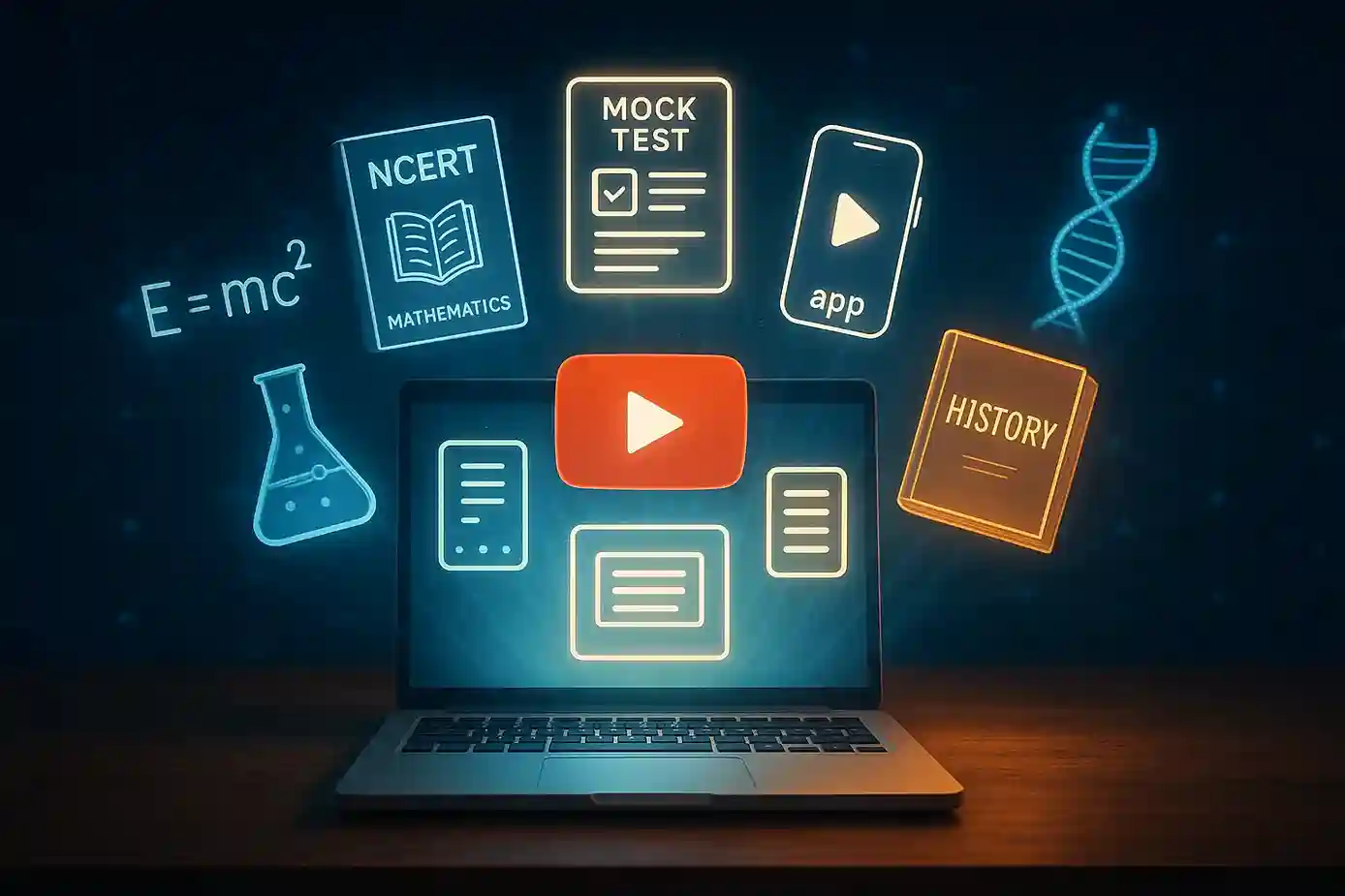Unlocking the Power of Visual Learning for CBSE Students
Explore how mind mapping can simplify complex topics for CBSE students, enhancing memory retention and understanding through visual learning techniques.

Edzy Team
@edzyteam
In the fast-paced world of education, students often find themselves overwhelmed by complex subjects. For CBSE students, mastering intricate topics can be a daunting task. However, one effective technique that has gained popularity is mind mapping. This creative and visual approach to studying not only simplifies difficult concepts but also enhances memory retention. In this blog, we will explore the benefits of mind mapping, how to create effective mind maps, and practical examples to help students excel in their studies.
Mind mapping is a visual representation of information that organizes ideas and concepts around a central theme. Developed by Tony Buzan in the 1960s, this technique allows students to break down complex topics into manageable parts. By using colors, images, and keywords, mind maps create a structured overview of the subject matter, making it easier to understand and remember.
For CBSE students, mind mapping can be particularly beneficial in subjects like Science, History, and English, where intricate details and connections are crucial for comprehension. Instead of relying solely on linear notes, students can visualize relationships between concepts, leading to deeper understanding and retention.
Research has shown that visual learning significantly enhances memory retention. The brain processes images faster than text, making it easier to recall information presented visually. When students create mind maps, they engage both the left and right hemispheres of the brain. The left hemisphere, responsible for logical thinking, processes the information, while the right hemisphere, associated with creativity, helps in visualizing the connections.
Moreover, mind mapping taps into the brain's natural ability to recognize patterns. By organizing information visually, students can see how different concepts relate to one another, making it easier to remember them during exams. This technique also encourages active learning, as students are involved in the process of creating their own maps, rather than passively receiving information.
Creating a mind map is a straightforward process that can be broken down into several steps:
Choose a Central Idea: Start with a central theme or topic that you want to explore. For example, if you are studying the "Water Cycle," write it in the center of your page.
Add Main Branches: Identify the key concepts related to the central idea. For the water cycle, these could include "Evaporation," "Condensation," "Precipitation," and "Collection." Draw branches from the central idea to represent these concepts.
Include Sub-branches: For each main branch, add sub-branches that delve into more specific details. Under "Evaporation," you might include factors like "Temperature" and "Wind Speed." This hierarchical structure helps in organizing information logically.
Use Colors and Images: Incorporate different colors for each branch to make the map visually appealing. Adding images or symbols can also enhance memory retention by creating visual cues.
Review and Revise: Once your mind map is complete, take a moment to review it. Make any necessary adjustments to ensure clarity and coherence. This step is crucial for reinforcing your understanding of the topic.
By following these steps, CBSE students can create effective mind maps that simplify complex topics and aid in their studies.
To illustrate the effectiveness of mind mapping, let’s explore examples in three different subjects:
When studying the human digestive system, a mind map can help students visualize the entire process. The central idea would be "Human Digestive System," with branches representing each organ involved, such as the "Mouth," "Esophagus," "Stomach," "Small Intestine," and "Large Intestine." Each branch can further include sub-branches detailing functions, enzymes, and related processes. This visual representation allows students to see how each part contributes to digestion, making it easier to recall during exams.
In a history class, students can create a mind map to explore the causes of World War I. The central theme would be "Causes of World War I," with branches for "Militarism," "Alliances," "Imperialism," and "Nationalism." Each branch can include sub-branches that detail specific events or treaties, such as the "Triple Alliance" or the "Assassination of Archduke Franz Ferdinand." This structure helps students understand the interconnectedness of historical events and their impact on the war.
When analyzing a novel, students can create a mind map centered around the book's title. Main branches could represent key elements like "Characters," "Themes," "Plot," and "Setting." Each branch can further break down into specific details, such as character traits, significant events, and thematic messages. This approach not only aids in comprehension but also prepares students for discussions and essays.
In today’s digital age, several tools and applications can help students create mind maps efficiently. Here are some popular options:
XMind: A versatile mind mapping tool that offers various templates and features for creating detailed maps.
MindMeister: An online platform that allows for collaborative mind mapping, making it ideal for group projects.
Coggle: A user-friendly tool that enables students to create visually appealing mind maps with ease.
Lucidchart: A diagramming application that supports mind mapping along with other visual representations.
SimpleMind: A mobile-friendly app that allows students to create mind maps on the go.
These tools not only streamline the mind mapping process but also allow students to access their maps from anywhere, making studying more flexible and efficient.
While mind mapping is a powerful technique, students should be aware of common pitfalls that can hinder its effectiveness:
Overcomplicating the Map: It's essential to keep mind maps simple and clear. Avoid cluttering the map with excessive information or too many branches, as this can lead to confusion.
Neglecting Structure: A well-structured mind map is crucial for understanding. Ensure that branches are logically organized and that connections between concepts are clear.
Ignoring Visual Elements: The strength of mind mapping lies in its visual nature. Students should utilize colors, images, and symbols to enhance their maps and make them more memorable.
Failing to Review: After creating a mind map, students should take the time to review and revise it. This step reinforces learning and helps identify any gaps in understanding.
By being mindful of these pitfalls, students can maximize the benefits of mind mapping in their studies.
Teachers play a vital role in promoting mind mapping as a learning tool. Here are some strategies for integrating mind maps into lessons:
Introduce Mind Mapping Early: Educators should introduce mind mapping techniques at the beginning of the academic year, allowing students to become familiar with the process.
Incorporate Group Activities: Encourage students to work in groups to create mind maps on specific topics. This collaborative approach fosters teamwork and enhances learning.
Use Mind Maps for Assessments: Teachers can incorporate mind maps into assessments, allowing students to demonstrate their understanding of a topic visually.
Provide Feedback: Offer constructive feedback on students' mind maps, highlighting strengths and areas for improvement. This guidance can help students refine their skills.
By integrating mind mapping into the classroom, teachers can empower students to take control of their learning and develop essential skills for academic success.
In conclusion, mind mapping is a valuable technique for CBSE students seeking to master complex topics. By visualizing information, students can simplify intricate concepts, enhance memory retention, and foster a deeper understanding of the subject matter. With the right tools and strategies, mind mapping can transform the way students approach their studies, making learning more engaging and effective.
As students and parents explore this technique, it’s essential to remember that learning is not just about memorization but about making connections. Mind mapping encourages students to see the bigger picture, linking ideas and concepts in a way that promotes critical thinking and creativity. By embracing this approach, CBSE students can unlock their full potential and achieve academic success.

How to Create the Perfect Study Environment at Home for CBSE Success
Designing a distraction-free space for effective CBSE study.

Best Study Timetables for Class 10 Students (With Subject-Wise Examples)
Smart timetables every Class 10 student can follow for balanced and effective exam preparation

How to Write Effective Notes for Faster NCERT Revisions
Smart note-making methods every CBSE student can use to save hours during NCERT revisions

Best Free Online Resources for NCERT and CBSE Practice in 2025
Top free online platforms every CBSE student should use for 2025 prep